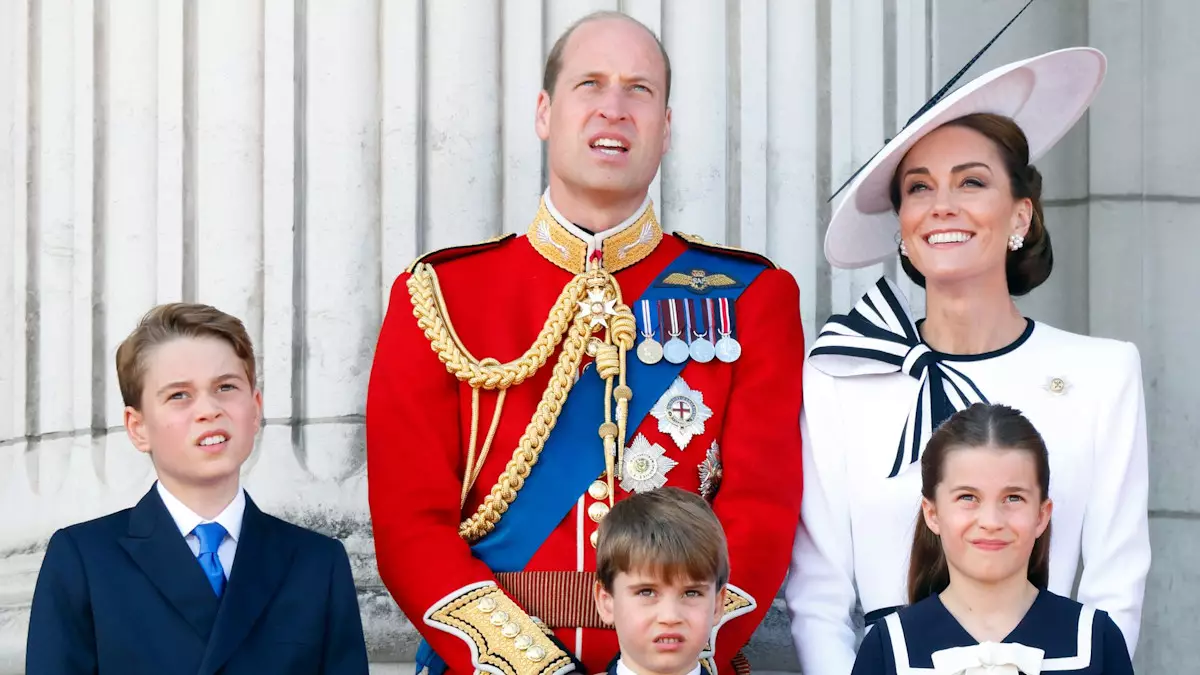When it comes to royal fashion, the Princess of Wales, Kate Middleton, has become an emblem of style and grace. However, her recent visit to South Wales shed light not only on her fashion choices but also on the values of sustainability and legacy embedded within her family’s wardrobe decisions. While exploring Corgi, a local sock manufacturer, Kate shared a remarkable insight regarding her and her children’s clothing – a testimony to the enduring quality of well-crafted garments. The notion of preserving children’s clothes as treasured heirlooms is an endearing practice, highlighting the importance of reusability and the sentimental value tied to clothing items.
Kate’s acknowledgment that she “archived” her children’s clothing reveals a more profound understanding of material culture among royal families. The practice goes beyond mere fashion; it is intertwined with the stories and memories of growth, familial traditions, and continuity. Her mention of garments that “wore really well” resonates deeply in today’s context of fast fashion, where clothing is often discarded after minimal use. The Princess of Wales, knowingly or unknowingly, champions an agenda of sustainability and thriftiness that many modern parents grapple with.
The wardrobe of Prince George, Princess Charlotte, and Prince Louis tells a unique narrative of the royal family’s values. A child’s outfit can embody various life stages, often reappearing in different family contexts. Kate’s reflections on how George’s clothes have been passed down to Charlotte and Louis resonate with parents who seek to instill values around sharing and reusing—principles that encourage resourcefulness and curtail needless consumption.
For instance, Charlotte’s choice to don a pair of Prince Harry’s vintage red shoes during the royal tour in 2017 not only underscored her connection to familial history but also illustrated the charm of rediscovering items from the past. The same applies to Prince Louis inheriting clothing from his father and even sporting a sailor suit once worn by William. Such examples showcase an understanding of atraditional fashion that emphasizes lineage and kinship, teaching the younger generation about continuity and the cherished memories attached to wearing family history.
Kate’s visit to Corgi revealed another layer of her personality—her willingness to connect with craftsmanship. By trying her hand at sock-making, she not only engaged in a humble yet complex process but showcased her genuine interest in artisanal traditions. Her admission that the task was “fiddly” and “definitely not my forte” further humanizes her, demonstrating that even within royal society, there are enjoyable learning curves and moments of humor.
The warm interaction with Corgi’s owners, Chris Jones and Lisa Wood, illustrated her appreciation for local craftsmanship and small businesses. This visit was not just a royal engagement; it was an acknowledgment of the valuable work being done to sustain traditional skills in a rapidly changing economic landscape. By encouraging children from local schools to engage with such craftsmanship, Kate promotes the passing on of skills, ensuring that rising generations understand the importance of knowing how clothing is made and appreciating the effort it takes to produce quality items.
In addition to her insights into fashion sustainability, Kate also visited the Ty Hafan children’s hospice, reinforcing her dedication to community causes. Her engagement with families there reflects a multi-dimensional approach to her royal duties—bridging the gap between tradition and modern-day relevance. The balance of nurturing family heritage while addressing contemporary societal issues is a hallmark of her public persona.
As she departed from Corgi, the thoughtful gifts presented to her, including a bespoke cashmere cardigan for herself and a wrap for her mother, illustrated a deep sense of personal connection and gratitude. It was not merely a royal visit but a mutually respectful exchange between a modern royal and a local business dedicated to preserving craftsmanship.
In reflection, Kate Middleton embodies a modern royal who cherishes timeless traditions while advocating for sustainability. Her insights on heirloom clothing choices, connections to community businesses, and genuine human interactions distinguish her as a relatable figure in the royal family. By infusing her engagements with personal narratives and social responsibility, Kate not only maintains royal heritage but also paves the way for conversations that matter today. Her visit to Corgi progressed beyond a simple public appearance; it was a celebration of values that resonate deeply with families across the nation—craftsmanship, community, and the intricate bonds of family heritage.

